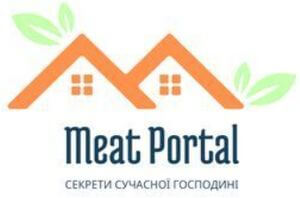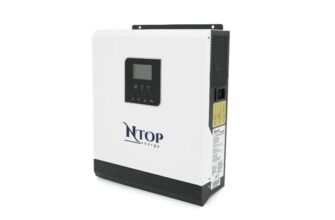If you earned your degree outside the United States and plan to study, work, or obtain a license here, you’ll likely need a credential evaluation. This process verifies your foreign education and determines its U.S. equivalent — but before any evaluation agency can review your records, your documents must be translated accurately.
Incorrect or incomplete translations are one of the most common reasons for delays and rejections by agencies like WES (World Education Services), ECE, SpanTran, and Josef Silny & Associates.
Here’s everything you need to know to make sure your diploma and transcript translation is accepted the first time.
- What Is a Credential Evaluation (and Why Translation Matters)
- Certified vs. Notarized vs. University Translations
- Why “Word-for-Word” Translation Is Non-Negotiable
- WES & ECE Translation Requirements (Updated 2025)
- Step-by-Step: How to Prepare Your Documents
- Common Mistakes to Avoid
- Quick Checklist Before Sending to WES
- Timeline and Cost Expectations
- FAQ: Translating for WES and Credential Evaluation
What Is a Credential Evaluation (and Why Translation Matters)
A credential evaluation is a professional review of academic documents — such as diplomas, transcripts, and certificates — issued outside the U.S. The goal is to determine your educational level and credit equivalency.
However, evaluation agencies don’t translate documents. They require you to submit a certified, word-for-word English translation completed by an independent professional translation company.
That means:
- Every word, seal, and handwritten note must appear in English.
- The translation must be literal, not adapted or summarized.
- It must include a Certificate of Translation Accuracy signed by the translator or agency.
- In some cases, notarization of the translator’s signature may also be requested.
Certified vs. Notarized vs. University Translations
Different institutions use similar words but have distinct requirements. The table below clarifies what each type means and which is accepted for credential evaluation.
| Type of Translation | Who Issues It | Accepted by WES/ECE | Typical Use |
|---|---|---|---|
| Certified Translation | Professional translation company | ✔ Yes | WES, ECE, SpanTran, USCIS |
| Notarized Translation | Translator’s signature notarized | Sometimes | Government licensing boards |
| University Translation | Prepared by student or university staff | ✘ No | Internal use only |
If you’re submitting documents to WES, ECE, or any NACES-approved credential evaluation agency, always choose a certified translation prepared by a qualified third-party provider.

Why “Word-for-Word” Translation Is Non-Negotiable
In the U.S., credential evaluation is not about interpretation — it’s about verification.
Agencies compare every line of your original document with its translation. Any deviation (even stylistic) can be flagged as an inaccuracy.
Examples:
- “Diploma with Honors” → “Degree with Distinction” (accurate, literal)
- “Specialist in Law” → “Master of Law” (changes the meaning and may downgrade or upgrade your level)
A word-for-word diploma translation ensures evaluators can cross-check each entry, stamp, and signature with precision.
WES & ECE Translation Requirements (Updated 2025)
To ensure your academic document translation for WES meets all criteria, confirm that your translator follows these standards:
- Identical layout — line-by-line or table-by-table structure.
- All pages numbered and corresponding to originals.
- Translator’s certification statement, signature, and date.
- Clear indication of stamps, seals, and handwritten notes.
- Completed by an independent certified translation agency (not the student or university).
These requirements align with the latest WES and NACES policies verified in 2025.
Step-by-Step: How to Prepare Your Documents
- Gather your originals — diploma, transcript, any attachments.
- Check spelling of your full name (it must match your passport).
- Send scans to a professional academic translation company for review.
- Approve the draft if a preview is provided.
- Receive your certified translation (PDF and/or printed copy).
- Submit the translation together with your originals to WES, ECE, or your chosen agency.
Most certified translations are completed within 1–2 business days.
If notarization is required, allow an extra day. Documents can be shipped via USPS, FedEx, or DHL, or provided as secure electronic copies.
Common Mistakes to Avoid
- Submitting self-translated documents.
- Missing translator’s signature or date on the certificate.
- Omitting stamps or seals in the English version.
- Translating “by meaning” instead of literally.
- Mismatched names or birth dates compared to your passport.
Even a small inconsistency can cause a delay or a request for resubmission.
Quick Checklist Before Sending to WES
| Requirement | Confirmed? |
|---|---|
| Certificate of Translation Accuracy attached | ☐ Yes |
| Translator’s signature and date | ☐ Yes |
| Stamps and seals translated | ☐ Yes |
| Page structure matches original | ☐ Yes |
| Names and dates identical to passport | ☐ Yes |
Keep this list handy before uploading your WES translation.
Timeline and Cost Expectations
| Service | Average Time | Typical Price (USD) |
|---|---|---|
| Diploma or transcript translation | 1–2 business days | $35–$50 per page |
| Notarization (if required) | + 1 business day | $15–$25 extra |
| Digital delivery (PDF) | Same day | Included |
| Hard copy shipping (USPS Priority Mail) | 2–3 days | $11 average |
Prices vary depending on language, formatting, and certification type.
FAQ: Translating for WES and Credential Evaluation
1. Do I need notarization for WES?
Usually not. WES and ECE accept certified translations without notarization unless a specific institution requests it.
2. Can I translate my own diploma?
No. Agencies require an independent credential evaluation translation by a qualified translator or company.
3. What if my university already issued an English version?
If it’s an official bilingual document, you may submit it directly — but WES may still ask for a certified translation if any part remains untranslated.
4. Are certified translations accepted by USCIS as well?
Yes. A certified translation prepared for WES also meets USCIS translation requirements, so one version often serves both purposes.
5. What is NACES, and why does it matter?
NACES (National Association of Credential Evaluation Services) is the main U.S. association of recognized evaluation agencies, including WES, ECE, and SpanTran. Using a NACES-approved translation guarantees acceptance.
Getting your degree recognized in the United States starts with one simple but crucial step — a certified translation for WES that reflects your academic record exactly as it appears in your original documents.
It’s not just paperwork — it’s your educational identity.
Carolina Translation Center provides professional WES translation services and credential evaluation translations for all major U.S. agencies — certified, word-for-word, and fully compliant with WES, ECE, and NACES requirements.
Upload your documents securely today and receive your certified translation https://translation.center/credential-evaluation-translation-services within 1–2 business days — ready for evaluation.









